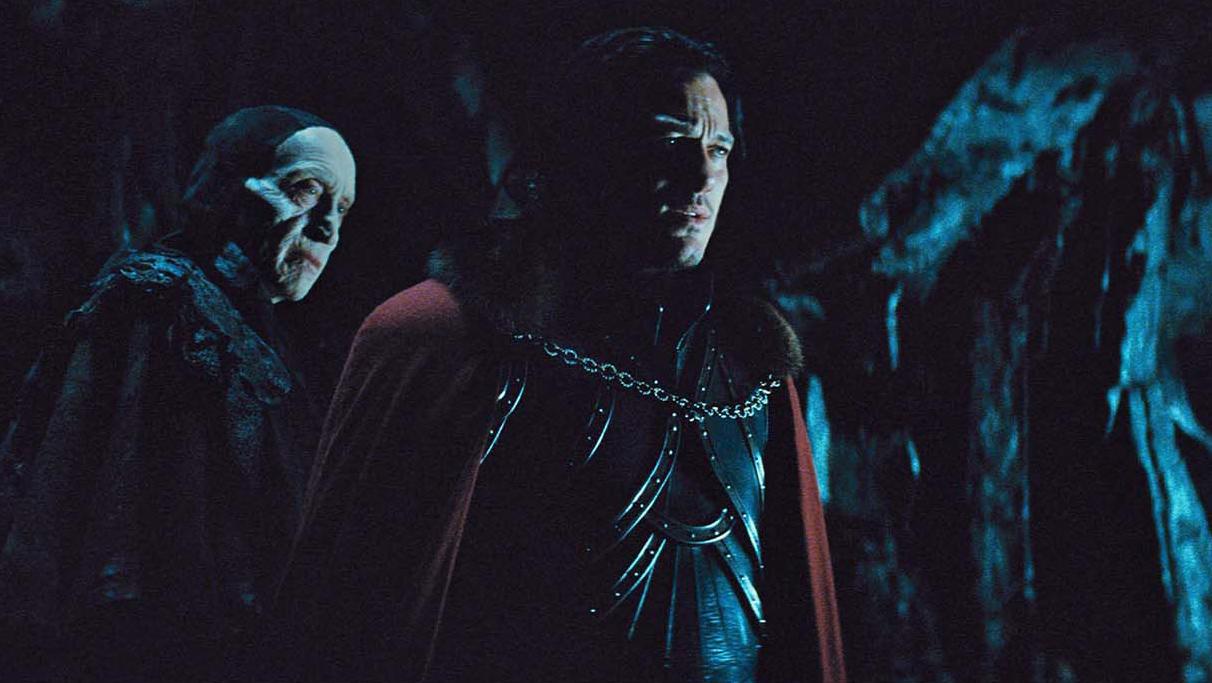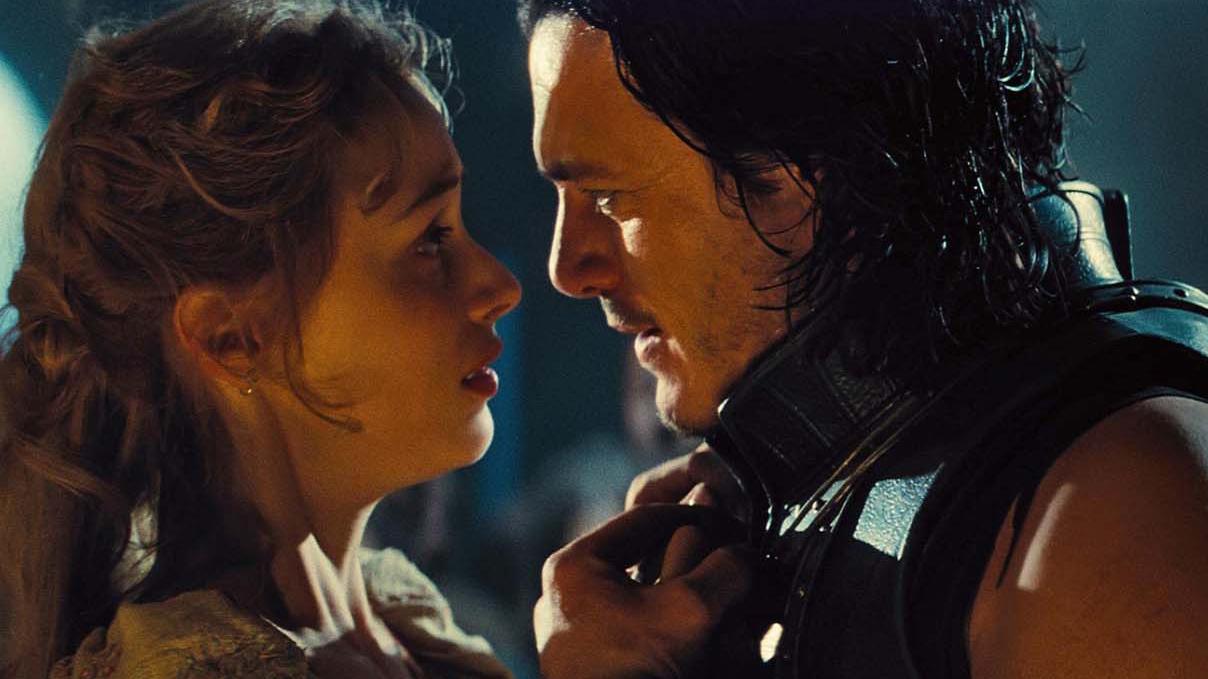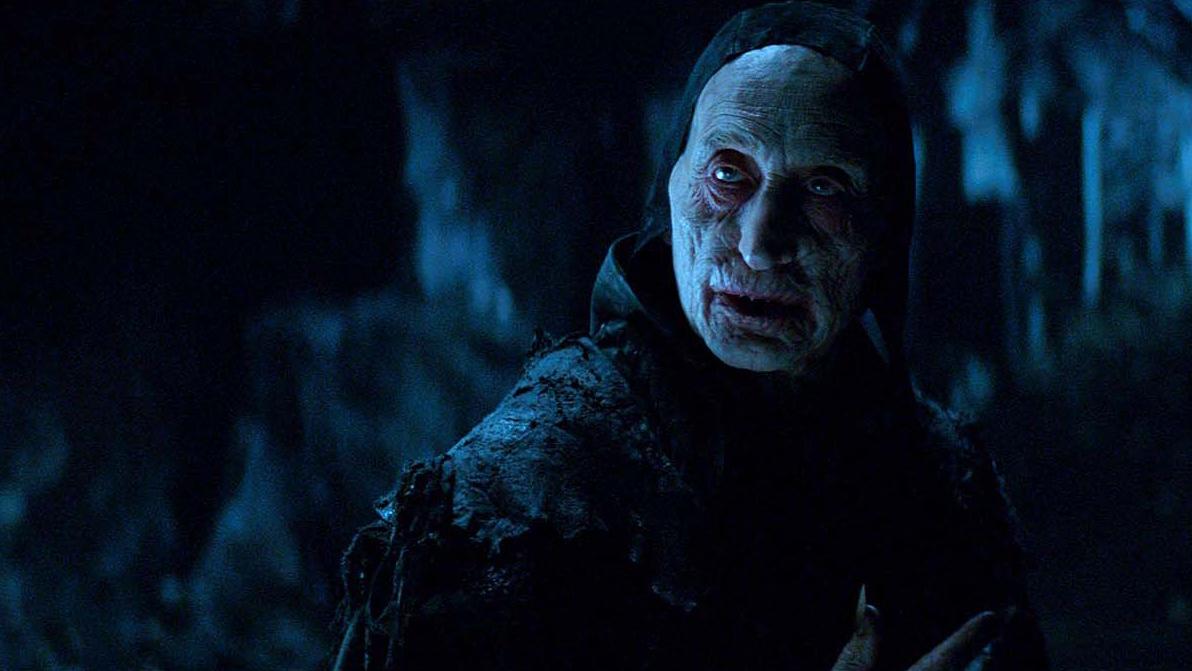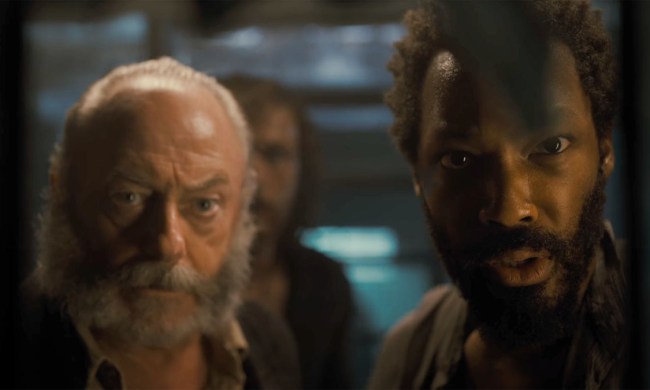“Sometimes the world no longer needs a hero. Sometimes it needs a monster.”
Thus begins the predictable descent of Vlad III “the Impaler” Tepes from noble hero into tortured antihero in Dracula Untold. This debut feature film from director Gary Shore ticks all the boxes for a safe, major Hollywood release these days. Gritty reboot of an established property: check. Central antihero making morally questionable choices for ostensibly good reasons: check. Beginning of a multi-film, interconnected cinematic universe: also check. More on that later.
Although sexy vampires have been all the rage in pop culture for the last few years, this is actually the first big budget film about Bram Stoker’s famous blood sucker since the critically-panned Dracula 2000. The hook of this particular outing is that rather than retreading the familiar, 19th century narrative of Jonathan Harker and Doctor Van Helsing’s encounter with the undead lord, it goes back to 15th century Wallachia to tell his origin story. Dracula Untold ties the vampire mythos directly into the historical Vlad III Tepes upon whom Stoker based his famous creation.
Thus begins the predictable descent of Vlad III “the Impaler” Tepes from noble hero into tortured antihero.
As a side note, while the broad narrative strokes do line up admirably with history, one unforgivable inaccuracy was the particular method of impaling. Historically Vlad would slowly run wooden pikes up through his victim’s torsos from the perineum up — a horrible way to go — before mounting them upright as a dire warning to any who would oppose him. In the film people are impaled perpendicularly through the chest. While certainly an unpleasant death, it is an inaccuracy that does somewhat diminish the sadism of the act that defined Tepes.
An ancient, terrifying vampire has set up shop in a nearby mountain cave, played in a welcome but all-too-brief cameo by Charles Dance (known to many as Tywin Lannister). Legend conveniently has it that he is awaiting someone to come and assume his powers so that he can be free from the cave. After an expository run-in with his impending sire, Vlad returns home to establish himself as a loving husband and father before a Turkish emissary comes to ruin his day by asking for a thousand young boys to join their army, including Vlad’s own son.
When Vlad refuses to hand over his son, bringing the wrath of the massive Turkish army down onto his little, demilitarized kingdom, he turns to the vampire in order to exchange his mortal soul for the power necessary to save his family and countrymen. This film’s version of vampirism has a try-before-you-buy model, though, giving Vlad three days of vampire superpowers to save his kingdom. If he can resist the growing thirst for human blood in that time, he will return to his mortal self. Give in and he is a monster forever, bound to his sire’s vaguely-alluded-to quest for vengeance.
Dracula Untold puts the horse before the carriage, by attempting to build something bigger before it’s earned our interest.
As for the former scenes, Vlad’s most visually impressive power while he tears up armies single-handedly like Cúchulainn is the ability to turn into a swarm of bats, which he puts to good tactical use by making himself into an amorphous, fast-shifting target in melee. Unfortunately, the frenetic battle scenes already lack visual clarity, and Vlad’s rapid transformations only serve to further muddy the action.
It makes a certain amount of sense to capture the confusion experienced by the Turkish soldiers, but this is Dracula’s film, and in all other respects it attempts to give you the power fantasy of wearing his shoes. A particular combat sequence shown entirely in reflection on a sword exemplifies how aspirations toward style are lost in a haze of imprecision.
The latter scenes of Vlad’s dilemma amount to little in the end. When his people finally do catch on to the fact that their leader is a vampire and try to kill him, the confrontation is defused by his wife and everyone just sort of awkwardly shuffles away to get ready for the climactic battle, dropping the matter.
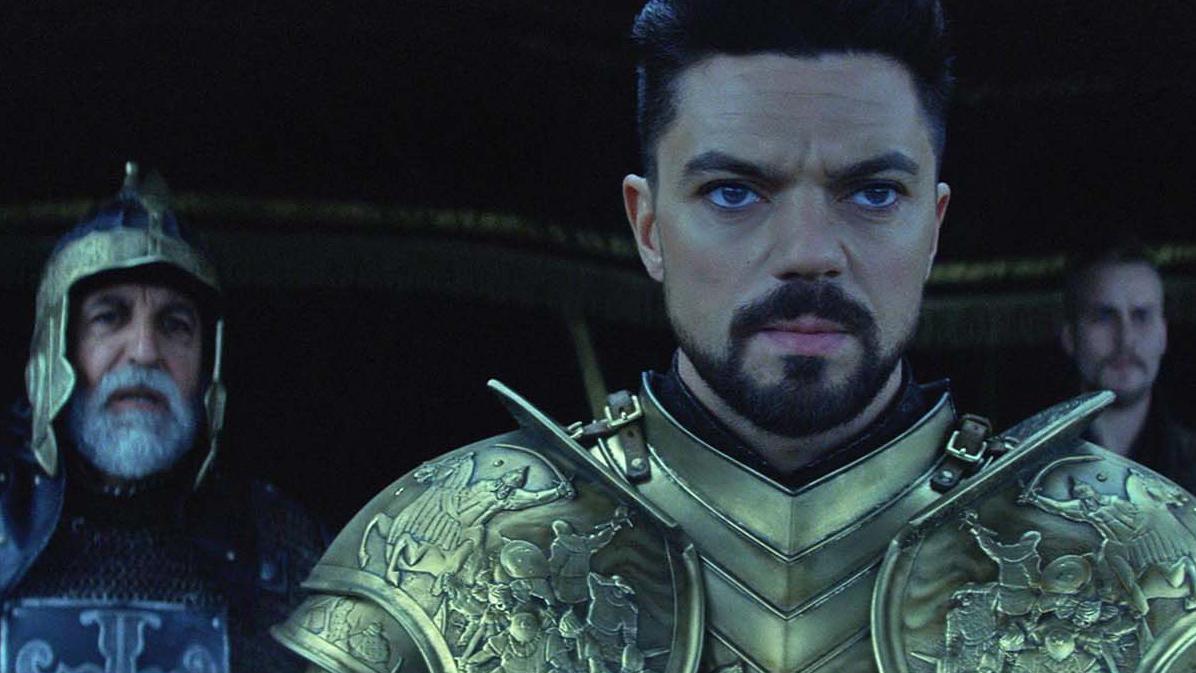
We all know how Vlad’s plan to resist temptation must turn out. At the film’s end we flash forward to present times, where an eternally-young Dracula is accosting and flirting with the apparent reincarnation of his wife (now named Mina in one of the few nods to Stoker’s novel) while Dance, dressed in a sharp suit, follows while villainously twirling his metaphorical mustache and talking about how the game is now afoot. It is here that the studio’s ambition to set up a franchise is laid most bare.
The producers have come clean that Dracula Untold is the first of what they hope will be a connected, cinematic universe of Universal Monster reboots in the vein of what Marvel has built with its comic-book movies over the last few years. Universal is the latest in a series of studios to chase Marvel’s intertextual success, and like other competitors, seems to be missing key points by imitating the effect and not the cause.
Among the many differences, Marvel is adapting material that has decades of crossover stories already built-in, and built its crossover movies on a foundation of solid, standalone films that followed interesting, empathetic characters. Dracula Untold puts the horse before the carriage, by attempting to build something bigger before it’s earned our interest in the individual parts. If you strip away the promise of bigger things to come, the film that remains is just a prosaic action movie origin story with some nice costumes and set design.
While rarely overtly bad, Dracula Untold strays very little from the middle of the road. A little more charm or some juicier action and its general mediocrity could be more easily forgiven in exchange for some fun, Hollywood schlock. As it stands, this forgettable film has little to recommend it.
Dracula Untold arrives in theaters this weekend.
